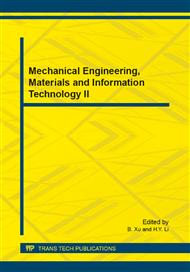p.3
p.7
p.11
p.15
p.20
p.24
p.29
p.33
The Limy Composite Binder with the Use of the Synthesized Aluminosilicates
Abstract:
The information about the structure and properties of the synthesized nanodisperse additive based on the aluminosilicates of calcium, intended for the production of limy dry construction mixes are provided. It is shown that the mineral composition of an additive is presented by crystal types of hydroxides of aluminum (bayerite and boyhmite) and the nanostructured amorphous aluminosilicate of calcium. It is established that the additive based on the aluminosilicates accelerates the process of hardening of limy compositions.
Info:
Periodical:
Pages:
11-14
Citation:
Online since:
October 2014
Price:
Сopyright:
© 2014 Trans Tech Publications Ltd. All Rights Reserved
Share:
Citation:


